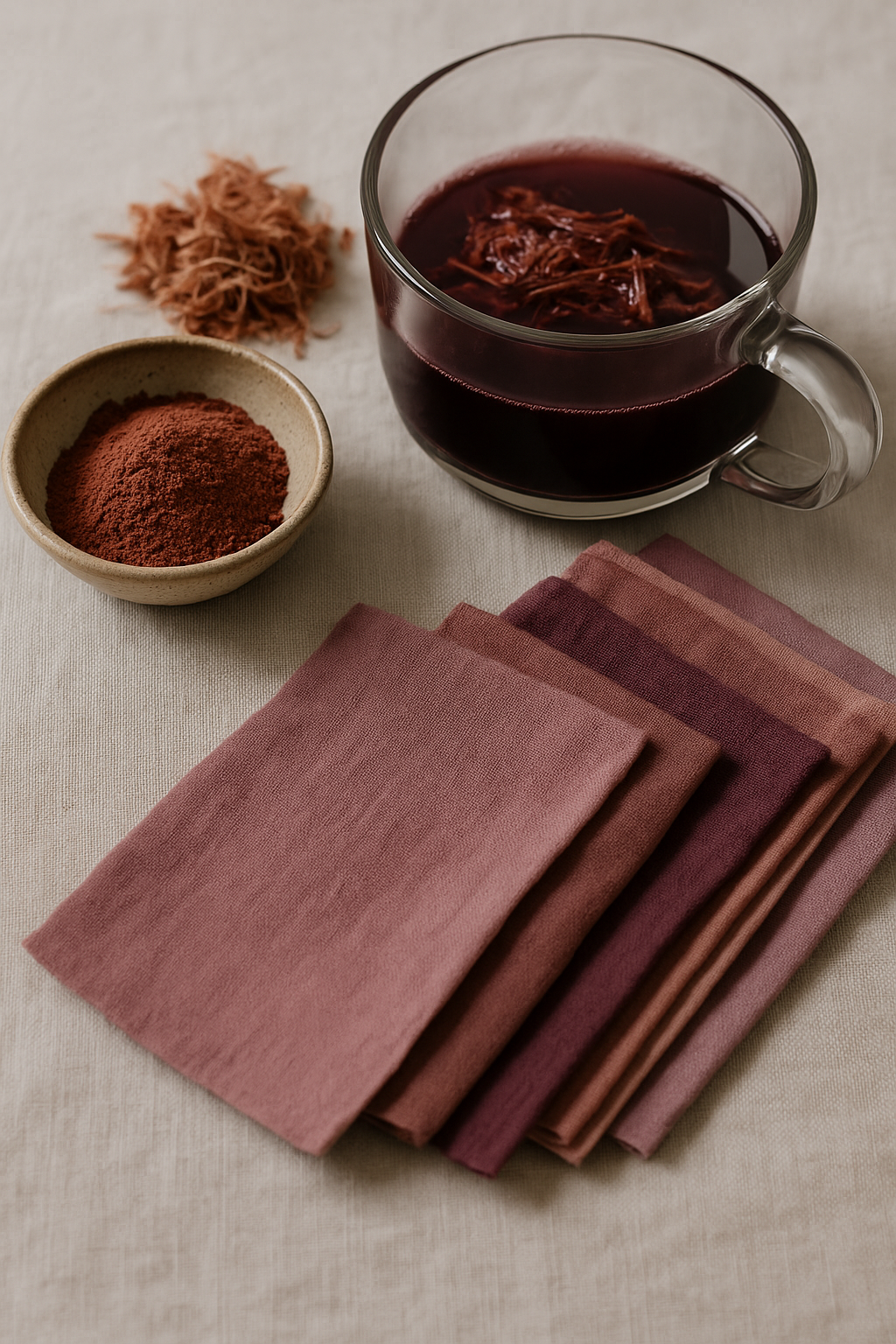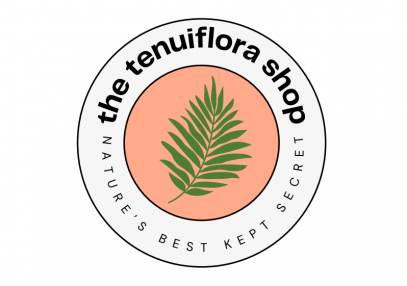Introduction: The Art of Natural Color
There’s something deeply satisfying about turning plain, neutral fabric into something alive with color — especially when that color comes straight from the earth. As more creators move toward eco-conscious crafting, natural dyeing has become more than a trend; it’s a revival of an ancient art.
One of the most powerful and fascinating botanicals in this craft is Mimosa Hostilis Root Bark — sometimes called Mimosa Tenuiflora. Known for producing some of the richest natural purples, reds, and browns, it’s quickly becoming a favorite among sustainable artists, soapmakers, and textile crafters.
Over the past few months, we’ve seen a growing number of artisans experimenting with Mimosa Hostilis Root Bark powder in their natural dye routines — especially for eco-conscious fabric projects. What makes this ingredient so special isn’t just its rich pigment, but how beautifully it reacts with different fibers when prepared correctly. For best results, always pre-wash your material with a mild, plant-based soap and soak it in a simple alum mordant solution before adding the dye. This small step locks in color, reduces fading, and allows the bark’s natural tannins to reveal their full depth. Whether you’re working with silk, cotton, or wool, a bit of patience and the right prep will reward you with tones that look handcrafted and timeless.
If you’ve ever wondered how to use Mimosa Hostilis Root Bark for natural dyeing, this guide will walk you through every step — from prepping your fabric and extracting pigment to setting the final color for lasting vibrancy.
What Is Mimosa Hostilis Root Bark?
Mimosa Hostilis is a perennial tree native to Mexico and parts of South America. For centuries, indigenous communities have valued it for its healing and restorative properties. But beyond its medicinal history, the root bark holds an extraordinary secret: an incredibly high tannin content that makes it a natural powerhouse for dyeing.
Tannins act as natural color binders. When combined with a mordant (a substance that helps pigment adhere to fibers), they allow the color to deeply bond to fabric or other materials. That’s what gives Mimosa Hostilis its reputation for long-lasting, earthy tones that don’t easily fade.
The bark is typically available in two forms:
- Shredded: Great for slow extractions and deep soaks.
- Powdered: Perfect for quick, intense dye baths and soap coloring.
At The Tenuiflora Shop, Mimosa Hostilis Root Bark is sourced ethically and processed carefully to preserve its natural pigment — giving you consistent, vivid results every time.
Why Choose Mimosa Hostilis for Natural Dyeing
If you’ve experimented with other plant-based dyes like turmeric, madder root, or beetroot, you’ll immediately notice the difference with Mimosa Hostilis. Its color payoff is richer, its binding power stronger, and its range surprisingly wide — from soft rose to dark plum, depending on how it’s prepared.
Here’s what makes it special:
- Deep, versatile tones: Produces an earthy palette from pinks and mauves to dark purples and browns.
- Strong tannin structure: Creates durable, fade-resistant results.
- Works across fibers: Bonds beautifully with cotton, silk, wool, and even paper pulp.
- Eco-friendly: 100% natural and biodegradable.
- Multi-use: Great for textiles, soaps, and artistic dye work.
It’s no exaggeration — when you master this dye, you can achieve color depth that rivals synthetic pigments while keeping your process completely natural.
How to Use Mimosa Hostilis Root Bark for Natural Dyeing
Below is a full step-by-step guide that covers everything from fabric prep to finishing. The process is simple once you’ve done it once — but precision in the details makes all the difference.

Step 1: Preparing Your Fabric
Before you even touch your dye, start with clean fabric. Any oil, dirt, or sizing on the material will prevent the pigment from sticking evenly.
- Wash your fabric in warm water with a mild, unscented soap.
- Rinse thoroughly and allow it to dry.
- Scour if needed: For cotton or linen, simmer the fabric in hot water with a tablespoon of washing soda to strip any remaining residue.
This ensures the fibers are open and ready to absorb the dye.
Step 2: Mordanting — The Key to Color That Lasts
A mordant is what helps the color bind to your fabric fibers. Without it, your colors may appear beautiful at first but fade quickly after washing.
The most common and beginner-friendly mordant is alum (potassium aluminum sulfate). You can find it easily at natural dye supply shops or health stores.
How to Mordant:
- Fill a large pot with enough water for your fabric to move freely.
- Add 1 tablespoon of alum per 100 grams of fabric.
- Stir well to dissolve.
- Add your fabric and simmer gently for about an hour (do not boil).
- Let it cool in the mordant bath before removing.
- Rinse lightly and air dry.
Now your fabric is fully prepped to receive the Mimosa Hostilis dye.
Step 3: Extracting the Color from Mimosa Hostilis
You can extract the dye from either shredded or powdered Mimosa Hostilis Root Bark.
Using Powdered Bark
- Add 2–3 tablespoons of powder per liter of water.
- Simmer for 30–60 minutes (avoid boiling to preserve pigment strength).
- Strain the liquid through a cheesecloth or fine mesh to remove residue.
- Your dye bath should now be a rich reddish-purple color.
Using Shredded Bark
- Add roughly 50–100 grams per liter of water.
- Simmer for 1–2 hours, stirring occasionally.
- Strain and cool before using.
If you want a deeper hue, you can repeat the simmering process with fresh bark for a double-strength dye.
Step 4: Dyeing the Fabric
Now for the fun part — turning that earthy dye bath into living color.
- Wet your mordanted fabric before adding it to the dye bath.
- Place it into the pot and stir gently to avoid air pockets or streaks.
- Simmer on low heat for 45–90 minutes, depending on the depth of color you want.
- Stir occasionally for even coverage.
- Once satisfied, remove and rinse in cool water until it runs mostly clear.
Let your fabric dry naturally, away from direct sunlight.
Step 5: Setting and Curing the Color
Natural dyes deepen and stabilize over time. To lock in your results:
- Let your fabric rest for at least 24 hours before the first wash.
- For maximum intensity, let it cure up to 48–72 hours.
- Wash gently with pH-neutral soap and air dry.
You’ll notice the tone subtly shift and mature as it dries — one of the most beautiful parts of working with Mimosa Hostilis.
Color Variations You Can Achieve
One of the reasons artisans love Mimosa Hostilis is the control it gives you over shade and tone. Here’s a quick reference guide:
| Desired Shade | Technique | Tips |
|---|---|---|
| Soft Pink | Dilute dye bath and short soak | Perfect for linen or silk |
| Deep Mauve | Use powdered bark and simmer longer | Stir frequently for even tone |
| Dark Brown/Purple | Double extraction (two batches of bark) | Best on cotton or wool |
| Rustic Red | Add a dash of iron (as modifier) | Enhances earthy tones |
Modifiers like iron or copper can alter the hue, but even without them, Mimosa Hostilis produces stunning, organic color ranges.
Combining Mimosa Hostilis with Other Natural Dyes
While the bark can hold its own, it also plays beautifully with other natural colorants. Try:
- Mimosa + Turmeric → Warm terracotta orange.
- Mimosa + Indigo → Deep plum.
- Mimosa + Madder Root → Rich rose-brown.
Layering dyes or overdyeing fabrics can create subtle transitions and depth, perfect for eco-printing or wearable art.
Common Mistakes to Avoid
- Boiling the dye bath: Too much heat can dull pigments.
- Skipping the mordant: The color will fade quickly without it.
- Using tap water: Minerals can interfere with dye bonding. Use distilled water if possible.
- Not testing first: Always do a small fabric swatch before dyeing large pieces.
- Washing too soon: Let the dye cure — patience pays off with richer color.
Why Quality Matters: The Tenuiflora Shop Difference
Not all Mimosa Hostilis Root Bark is created equal. The potency of its pigment depends on its origin, age, and processing method. Lower-quality or poorly stored bark can yield dull, uneven results.
At The Tenuiflora Shop, every batch of Mimosa Hostilis Root Bark powder is:
- Ethically harvested from mature trees in Mexico.
- Finely milled to maximize surface area for extraction.
- Stored in airtight, light-blocking containers to maintain freshness.
That means you get stronger pigment, smoother blending, and more consistent results — whether you’re dyeing fabric, crafting soap, or experimenting with eco-art.
Creative Applications Beyond Fabric
Mimosa Hostilis isn’t limited to textiles. Once you’ve mastered the dyeing process, you can expand into creative uses like:
- Soapmaking: Add powder directly for natural color and gentle exfoliation.
- Paper dyeing: Create handmade stationery or art paper with a pink-brown tint.
- Yarn dyeing: Perfect for hand-spun wool or silk fibers.
- Natural art pigment: Use leftover dye as a watercolor or ink.
Its versatility makes it one of the most valuable natural dyes to keep in your craft arsenal.
Sustainability and Ethical Sourcing
Sustainable crafting isn’t just about avoiding chemicals — it’s about ensuring the plants we use are harvested responsibly. Mimosa Hostilis grows abundantly, but ethical sourcing ensures that local ecosystems remain balanced and the bark is collected without harming the trees.
By choosing suppliers who value transparency and sustainability, you help preserve the integrity of this powerful plant for future generations. That’s why The Tenuiflora Shop emphasizes ethical trade and ecological respect in every shipment. Learn more about the science and history of natural dyeing at Natural Dyes International.
Conclusion: Let Nature Color Your World
Dyeing with Mimosa Hostilis Root Bark is a beautiful reminder that nature provides everything we need — if we take the time to understand it. Its deep, transformative color connects us to the earth’s history of artistry and craftsmanship.
Now that you know how to use Mimosa Hostilis Root Bark for natural dyeing, you can start experimenting with your own fabrics, textures, and blends. Whether you’re creating wearable art, home décor, or natural soap, each project becomes a small expression of nature’s beauty and your own creativity.
If you’re looking to source authentic, high-quality Mimosa Tenuiflora bark for your next project, explore our ethically harvested collection at The Tenuiflora Shop. Each batch is tested for strength, color consistency, and purity — perfect for natural dyeing, soapmaking, or botanical crafting.
👉 Shop authentic Mimosa Hostilis Root Bark powder at The Tenuiflora Shop and bring nature’s color to life in your next creation.
